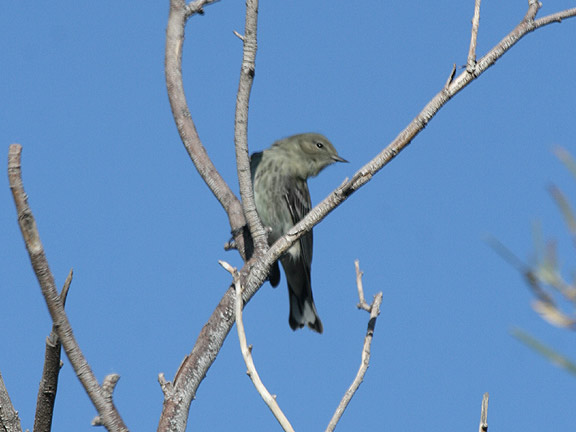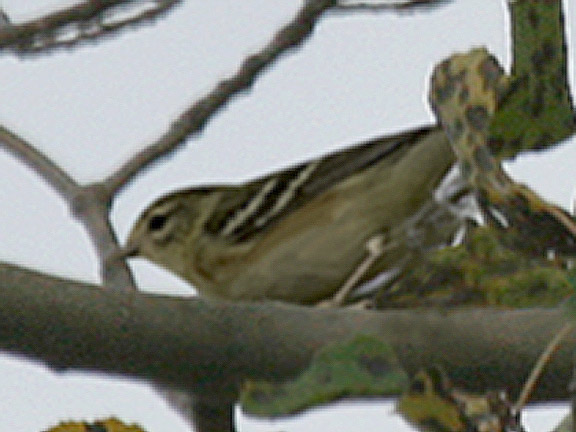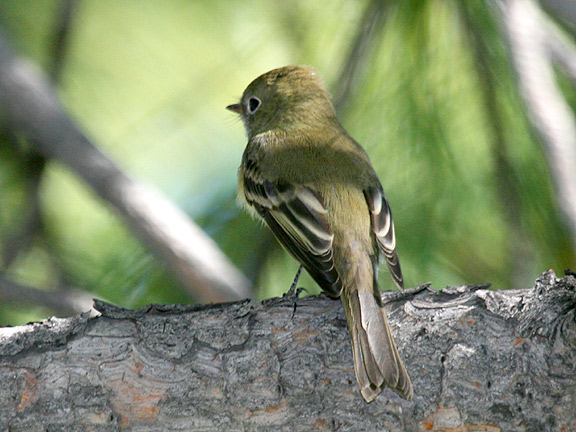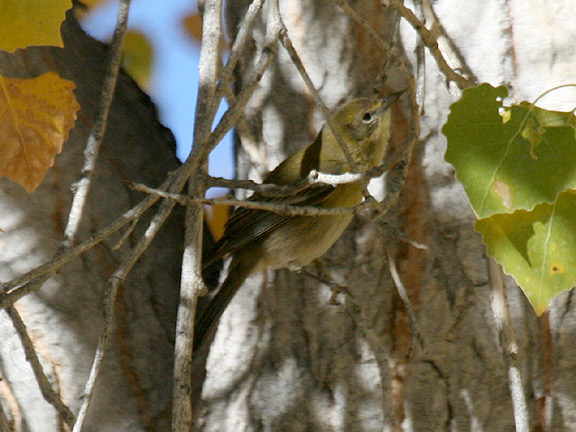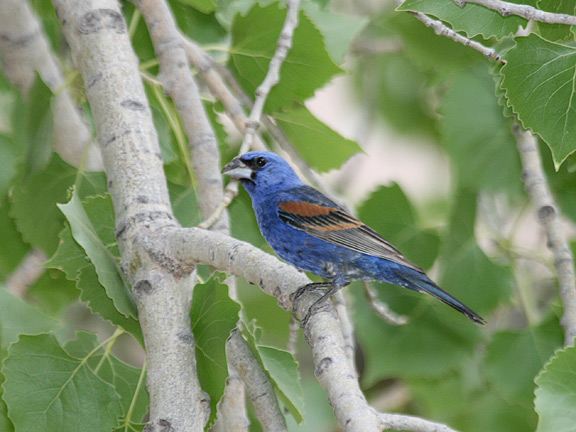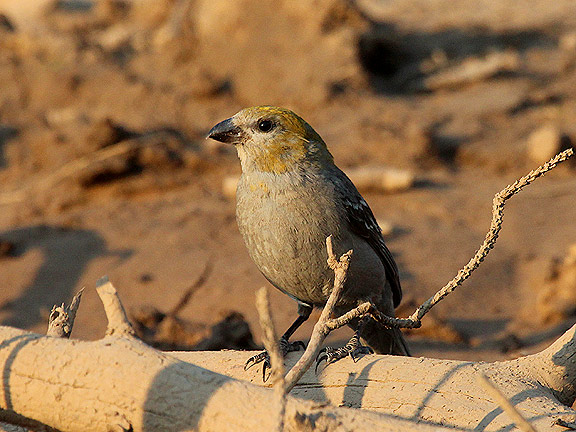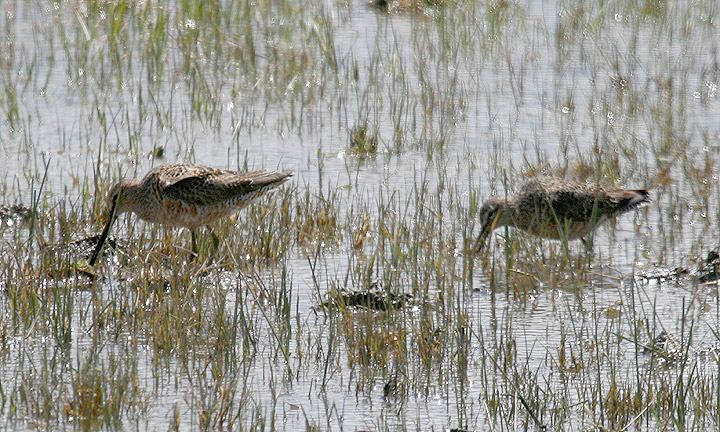I recently posted a response to a thread on UBIRD about historical checklists and incidental counts in
eBird. There were 3 main topics I talked about.
- Adding valuable sighting information to historical vagrants/rarities
- Splitting larger generic checklists into smaller location specific checklists
- Removing possibly bad data or in particular mis-identifications
The email didn't go in to a ton of detail on these topics, just my brief overview of why I felt it was important. But I wanted to expand on that, and give a few real world examples of the issues, and what I've been doing to try and practice what I preach. I've had a few interesting conversations about the subject, and gotten different perspectives and personal opinions on the matter. It brought up a couple things that I thought were also worth talking about.
I talked to several people who mentioned their #1 reason for using
eBird was to keep track of their sightings for themselves above all else. The data after all was being provided free of charge by the birders/observers, and that in itself was valuable despite the quality of the data. It would be a lie if I didn't say that was also WHY I initially started using
eBird back in 2004. It was an easy way to track my own sightings, I was after all filling up several notebooks a year with lists and this was an easier way to keep those lists, and manage them. For this reason I was quite cavalier with my locations. I often did counts for entire days for a county, or along 100 mile section of road. My lists were less for science than my personal needs.
There are in fact a lot of
eBird users who
ONLY use
eBird for this very reason, and that's perfectly acceptable--it's a great tool for that--but it's also so much more.
Now I also talked to one person who mentioned that sometimes they just put in a list for a whole weekend because they wanted to keep track of the birds they'd seen, but they'd visited 10 places, seen 150 birds, and didn't want to take the time to go enter individual checklists for every place they went. That's another one I could relate to--I've done exactly the same. Creating and submitting checklists can be time consuming, and for some they just don't have the time to get granular. Some data is better than no data after all.
Cape May Warbler from Lytle Ranch... Less than 5 ever reported in Utah.
And yet one other person who kept very detailed lists of species seen never added details, photos, or any information to their lists. In their opinion they were already providing high quality data, and felt that the need to add more details was benign. In the long run there will be so much data that these details won't matter--the pictures, notes, etc. And again, I have done the same, I get it, and in some cases I whole-heartedly agree. I have heard the argument that in 150 years someone might be looking back at some data and see a report of a Cape May Warbler in Utah with no associated data. The report was validated but without any supporting data because I was experienced with that species. But how would those people know who I am? Honestly, I hope I leave some type of impact on birding in Utah in my life time, whether small or big--I would hope with a little digging someone can figure out who I was--especially in this digital age. But I digress, I also see the flip side, and that's where this whole blog post got started. Let's talk about those bullet points.
Adding valuable sighting information to historical vagrants/rarities.
Over the years I have slowly become more and more methodical with my checklists. This means being more granular with locations, and more detailed with subspecies, and adding specific details about flagged sightings. This is a personal choice, to try and make my checklists not only more valuable to researches, and those using the data for scientific purposes; but also, for other birders to be able to glean them for data, and for me personally to be able to look back and see details about a sighting all in one place. As of the writing of this I have submitted 3226
eBird checklists for Utah. As that number grows it becomes harder and harder to look at specific checklists with flagged sightings and remember all the details. So thus started the drawn out process of going back and adding those details.
Utah's 1st documented Bay-breasted Warbler
I started with my taxonomic life list for Utah and started working my way down. I specifically wanted to concentrate on adding details to species with less than 25 reports ever for Utah--with more details being added to the rarest species--those typically with less than 5 reports ever.
Utah's 1st Yellow-bellied Flycatcher
In cases where I had photos, videos, or recordings I embedded those in. Photos linked to my website, videos from Youtube, and recordings from Xeno-canto if available. If I felt the photos were sufficient for the report I often kept the notes short. On some species I added a small blurb, and on others complete paragraphs of texts that I cut out of emails I pulled from the original reports, or from Records Committee Reports from some of my oldest sightings. I didn't remember all the details from many of these reports so going back and searching in UBIRD, and other listserv archives for my original posts was really helpful. It also saved me from writing in details that might not be as accurate otherwise.
Utah's 1st Pine Warbler
I soon realized I had hundreds of such checklists, so it was somewhat tedious--but the end results were lots of photos added into the data pool, and some detailed (and not so detailed) write-ups of species that otherwise were originally note-less. In all so far I've added details for 36 species, on 52 checklists. Some of the more notable were details for
eBird Utah's first Western Gull, Pine Warbler, Eastern Meadowlark, Sharp-tailed Sandpiper, Cape May Warbler, Yellow-bellied Flycatcher, Gilded Flicker, Bay-breasted Warbler, Black-billed Cuckoo, and Little Gull.. Despite the time that went into it, it was fairly easy to do, and well worth it.
Splitting larger generic checklists into smaller location specific checklists
I recently flipped through a field notebook from one of my summers working in Wyoming during college. I had 1 or 2 checklists for most days. One list was the survey I ran that morning, and the other was the rest of the birding that day. In some cases I drove over 100 miles on these days and went through every typical habitat type found in western Wyoming. In
eBird these lists would look ridiculous--but none-the-less I have a few. Luckily most of my college years checklists from Wyoming are not in
eBird yet. But I have dozens form the early years of
eBird that I did enter like this. Some are an entire day count for 16 hours at a lake in the Uinta's. The checklist covers shrubsteppe, aspen, conifer, and mountain reservoir habitats though. I probably traveled 10 miles during the day and the list could be broken down more. These are hard though, because some of the birds cross habitats, and I don't remember what was in which necessarily. For these it's really best to just leave as is--its 1 checklist out of 1,000's, in the bigger picture that data is "close enough" that it won't look too out of place--and if it is the reviewer can invalidate the list.
Blue Grosbeak from 12,000' in the Uintas??? I think not.
But what about a 40 mile drive from Vernal to Hacking Lake in the Uinta's? It looks odd when a checklist has both Blue Grosbeak and Pine Grosbeak together. Or Red Crossbill and Lesser Goldfinch. Or Dark-eyed Junco and Marsh Wren (in August). During the early years I did this often--one checklist for the entire length of a road. The best recommendation is going through and removing the species that don't fit the greater picture, and breaking them out into a separate list at a better location for them. Or break it down in to as many lists as you feel comfortable doing. In this case I broke 1 list into 5. Vernal, the lower section of Sagebrush, Aspen Forests, Conifer Forests, and finally Hacking Lake. It's still not perfect, but it fixes one bad list.
Pine Grosbeak should never be on the same list as Blue Grosbeak in Utah...
One of the most common offenders of this is the "Antelope Island State Park" checklist submission. There are numerous hot spot points for the park, but many folks do one list for 5 or 6 visited spots. This means you have Snowy Plovers and Godwits on the island. Others mistake the causeway spot for the whole park and then you end up with Warblers, Tanagers, and Orioles on the causeway. I tend to do a list for the causeway and each major location I go to on the island. Sometimes I leave with 7 checklists--but its super granular and useful. This is one thing I have made a better effort at in recent years and try to be as specific as makes sense for the places I'm going. With apps like BirdLog it now makes it easier to avoid this, allowing you to quickly create a new list on the fly while in the field as you go from habitat to habitat, or location to location.
Removing possibly bad data or in particular mis-identifications
This is one of the hardest for most people to do--myself included. Going back and looking at lists and saying, that's not right, or I'm just not sure anymore, can be difficult for most birders. I went back and removed a number of my old Short-billed Dowitcher reports and changed them to Dowitcher sp. I did leave ones that had photo evidence, but ones without were mostly changed. I went back and took Least Bittern off an Ouray list I had form my younger years. At the time others were reporting them, and I thought I saw one. But looking back and having seen that species since it was a no brainer to remove it. In some cases if it doesn't seem right, its safer to just change it outright. Leave a note, change it to a spuh, with details about why you changed it. But if you aren't sure this is a good way to clean up old lists.
Dowitcher sp? Or one of each?
There are some that I probably should change, but I can't bring myself to do it. Sometimes you believe so much in a sighting you had, despite lack of evidence, experience, etc, you just stick with it. You very likely are correct with your belief, and in many cases the data has already been invalidated in
eBird, so for your personal use what does it matter? It's all about finding the right balance for how you use
eBird.
Whether your a hard-core
eBirder, a casual user, or just someone who keeps basic lists via the awesome resource, there are things we can all do to make our lists more useful--for everyone. And I'm sure there will be more ways in the future, and things will change, and improve.
eBird has come along way in the last 10 years, and so has the quality and amount of data.
How do you personally make your checklists more useful? Share below, and help others improve the data they're submitting!Labels: checklist, commentary, eBird, listing, lists


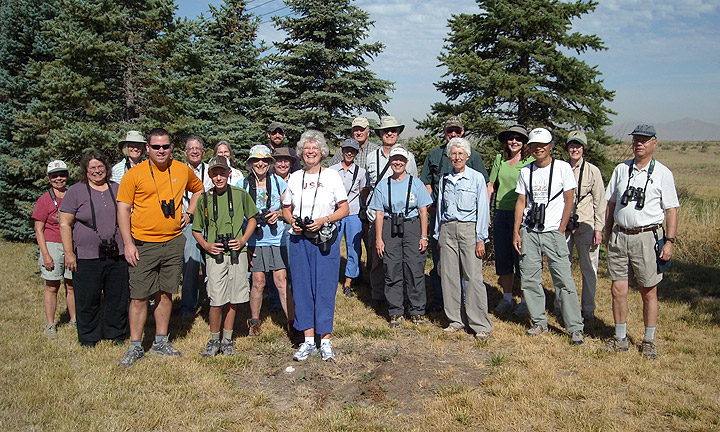



.jpg)



